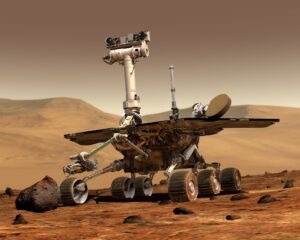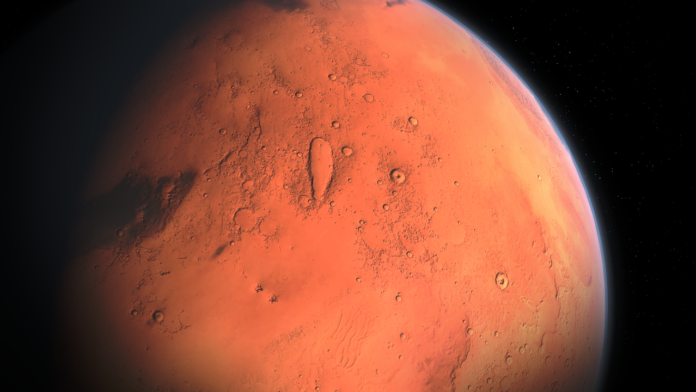In the annals of human exploration, few endeavours capture the imagination quite like the quest to conquer Mars. Over the past decades, technological advancements and the relentless determination of scientists, engineers, and visionaries have propelled us ever closer to that tantalizing red horizon. As we stand on the cusp of a new era in interplanetary exploration, let’s delve into the captivating projects currently in progress that could lead us to the Red Planet and attempt to map out a plausible timeline for this monumental achievement.
The Mars Odyssey: A Global Endeavour
Embarking on a mission to Mars requires a symphony of scientific ingenuity, international cooperation, and the convergence of multiple cutting-edge projects. A number of projects are currently active around the world with a variety of space agencies and private enterprises pooling resources, knowledge, and expertise to achieve the unprecedented feat of sending humans to Mars.
At the forefront of this collaboration is NASA’s Artemis program, aiming to return humans to the Moon by the mid-2020s and establish a lunar gateway for launching missions to Mars and beyond. This ‘Moon to Mars’ plan involves building a new space station in lunar orbit and, eventually, establishing a habitable Moon base, which will eventually allow for the assembly of spacecraft, refuelling, and staging free from Earth’s atmosphere, a crucial component in the grand odyssey to Mars.
Meanwhile, SpaceX’s ambitious Starship project is nothing short of revolutionary. With its reusable, fully capable spacecraft, Starship aims to make interplanetary travel as routine as air travel, substantially reducing costs and travel times. The prototype testing and ongoing refinements are propelling us closer to realizing SpaceX founder and CEO, Elon Musk’s audacious vision of a self-sustaining city on Mars.
Pioneering the Unknown: Key Milestones and Challenges

While the journey to Mars holds promises of scientific discovery and the potential for human colonization, it is not without its challenges. The hostile Martian environment, radiation exposure, long-duration space travel, and life support systems are just a few of the daunting hurdles that demand innovative solutions.
One of the most significant achievements in recent years was the successful landing of the Perseverance rover on Mars, equipped with advanced instruments to explore the planet’s geology, climate, and potential signs of past life. This marks a pivotal step toward understanding the Martian landscape and preparing for human missions.
On the 20th of April, 2023 SpaceX attempted to launch the behemoth “Starship”, atop its Super Heavy booster. Starship is expected to be the backbone of any effort the company makes to get to Mars as it is capable of powering crew, equipment and all necessary supplies for a mission out of the earth’s atmosphere.
“If Starship is successful, I have little doubt that it’s going to be the workhorse that will bring humans back to the moon and Mars” Olivier de Weck, professor of aeronautics, astronautics, and engineering at MIT, said at the time.
Liftoff was successful, but roughly three minutes into the flight the booster failed to separate from Starship, and the rocket tumbled through the air before bursting into a fireball. Musk has explained that the company will try again in the near future.
Other challenges
Physically getting to the planet is not the only challenge that humanity faces when it comes to landing a colony on Mars. The planet presents a number of unique difficulties relating to everything from the atmosphere to the pressure of the vast distances and long periods of isolation astronauts will experience. These challenges include:
The Inhospitable Terrain: A Red Puzzle to Solve
Mars presents a desolate and harsh environment, with frigid temperatures, thin and unbreathable atmosphere, and relentless dust storms. The first challenge lies in creating habitats that shield inhabitants from radiation and extreme temperatures while maintaining breathable air. Innovations in advanced materials, structural engineering, and life support systems are crucial to crafting a safe haven amidst the Martian desolation.
Radiation Hazards: The Silent Menace
Unlike Earth, Mars lacks a robust magnetic field and thick atmosphere to shield its surface from harmful cosmic and solar radiation. On the red planet, prolonged exposure to this radiation could lead to an array of health issues, including increased cancer risk and damage to vital organs. Finding ways to mitigate these dangers is imperative, whether through improved shielding materials or underground habitats.
Life Support and Sustainability: Growing Pains on Mars
Sustaining life on Mars is not merely a matter of survival but a challenge to thrive in a foreign ecosystem. While the barren Martian landscape may appear inhospitable, scientists are exploring ways to cultivate crops and generate food, recycle waste, and harness renewable energy sources. The development of closed-loop ecosystems and innovative agricultural techniques will be essential to ensure the self-sufficiency of Martian colonies.
Resource Scarcity: Navigating the Martian Frontier
With limited access to essential resources like water and raw materials, Martian settlers must master the art of resource utilization. Water, a precious commodity, could be extracted from underground ice or harvested from the thin Martian atmosphere. Leveraging local resources for construction and manufacturing will not only reduce reliance on Earth but also pave the way for sustainable, long-term habitation.
Isolation and Psychological Strain: Mental Well-being in the Void
The journey to Mars and life on the distant planet will impose unprecedented psychological challenges on its inhabitants. The isolation, confinement, and prolonged separation from loved ones could take a toll on mental well-being. Innovative approaches to address these psychological stressors, such as virtual reality therapy, social connection protocols, and comprehensive psychological support, will be paramount for the emotional health of Mars settlers.
International Cooperation: A Unified Odyssey
The Martian challenge is too monumental for any single nation or entity to tackle alone. International collaboration is essential, as it brings together the collective expertise, resources, and perspectives needed to overcome these multifaceted challenges. The lessons learned from the International Space Station and other collaborative efforts will serve as a blueprint for fostering unity in the face of Mars’ trials.
Mapping the Timeline: A Realistic Vision for Mars Arrival

Predicting an exact timeline for human arrival on Mars is a delicate blend of optimism, ambition, and realism. While projecting a definitive date remains challenging, we can glean insights from the current progress and projected developments.
Musk predicted in February 2023 that it is “highly likely” man will go to Mars within 10 years, but admitted this timeframe may have something to do with the fact that he is “congenitally optimistic”.
Initially, Musk had set a date of 2029, but admits that this is now probably the soonest man could go to Mars. If that date drifts into the mid-2030s then SpaceX may very well find itself competing with the NASA projects to land on the planet in a brand new space race.
By the late 2030s or early 2040s, a small cadre of pioneering explorers may reside on Mars for extended durations, further advancing scientific undertakings and testing the limits of human adaptation. These missions would provide invaluable data for refining life support systems, habitat construction, and resource utilization.
A sustainable and self-sufficient Mars colony, however, might not be realized until the mid-21st century. Achieving this milestone necessitates addressing multifaceted challenges, including radiation shielding, food production, energy generation, and water extraction from Martian resources.
A Final Frontier Beckons
As we peer into the not-so-distant future, the tantalizing vision of humans walking on the surface of Mars inches ever closer to reality. The ongoing collaboration between governmental agencies, private enterprises, and the global scientific community is driving the human spirit of exploration and innovation to new heights.
While we stand on the brink of this monumental achievement, it’s crucial to recognize that reaching Mars is not just a technological triumph but a testament to human resolve, curiosity, and unity. The journey to Mars is more than a mission; it’s a manifestation of our shared aspirations and our relentless pursuit of the unknown. The Red Planet awaits, and humanity’s odyssey continues.


